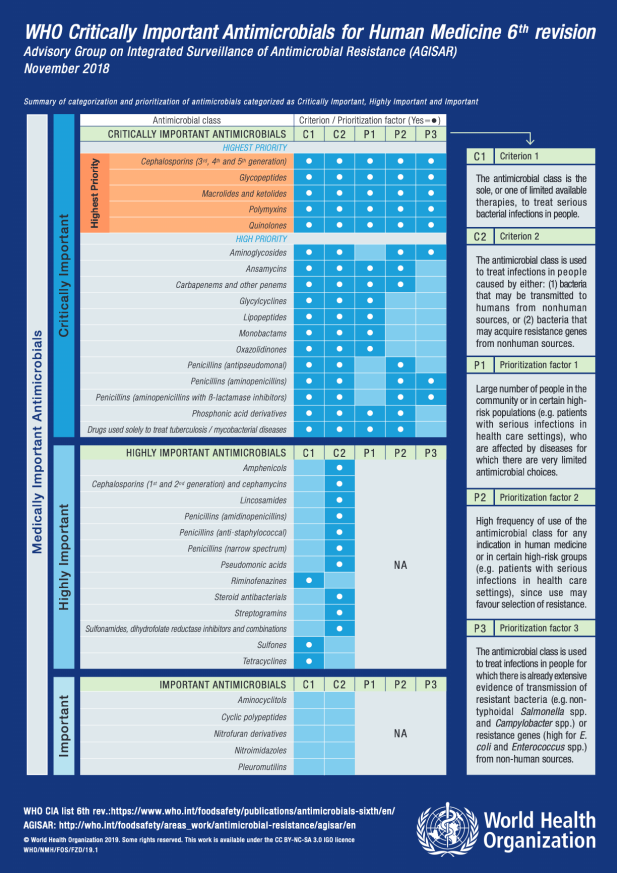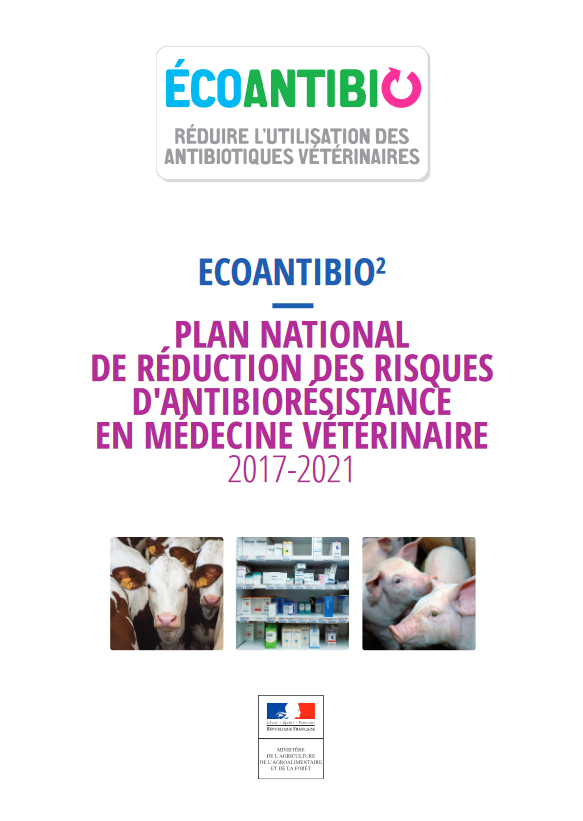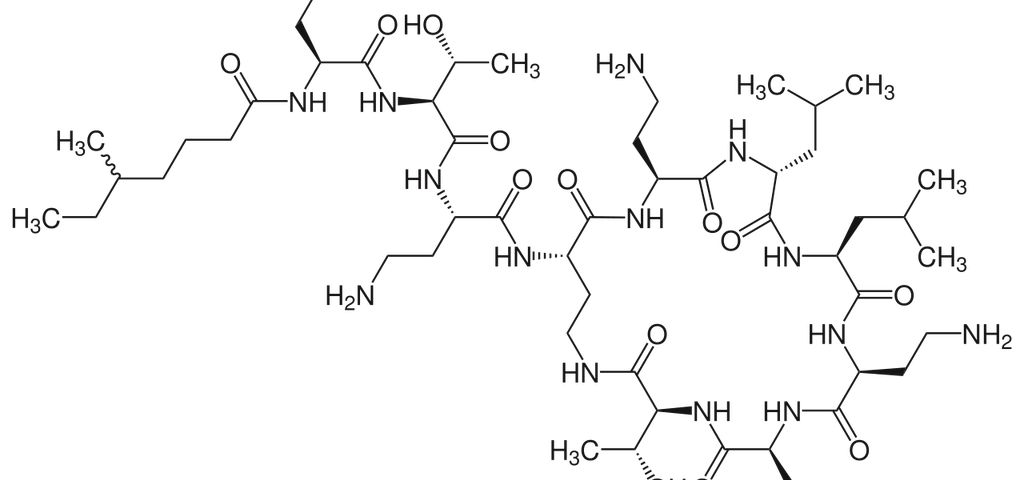To understand the intrigue posed by this molecule, it should be remembered that as an antimicrobial of last resort used in hospitals, colistin is intimately associated with present-day challenges posed by antimicrobial resistance and multi-resistant bacteria. This investigation illustrates the conflict that can arise between doctors and veterinarians over the use of the same molecules in order to maintain optimal conditions for their medical practices. Antimicrobial classifications, set up at the international and European level (World Health Organization [WHO], World Organization for Animal Health [OIE] and European Medicines Agency [EMA]), are instruments of public policy that embody this conflict.
Colistin is an old antimicrobial that was discovered in the late 1940s. Due to its toxicity, its use in human medicine was quickly restricted to local administration routes. It is against this backdrop that its use in veterinary medicine developed in several European countries, including France, in the decades that followed (ANSES, 2015). The veterinarians I interviewed described colistin as an "ideal" antimicrobial for animal medicine, especially essential for controlling E. coli infections in pig and poultry farms. Easily administered orally, it is inexpensive and to date has not been shown to be a significant factor behind antimicrobial resistance in animal health.
In the early 2000s, doctors began testing various therapeutic strategies to treat patients with serious infectious diseases caused by multi-resistant bacteria. It was discovered that bacteria were sensitive to colistin, a molecule to which they had not been exposed for many years. Its use gradually grew and colistin became an antimicrobial of last resort in human health.
The early 2000s also was the period when antimicrobial resistance began to receive attention. Scientific experts, microbiologists, doctors, veterinarians and institutional representatives began to tackle the subject. Numerous action plans were drawn up and implemented, and various antimicrobial management tools have been developed. Classifications of what are known as "critically important" antimicrobials are among the tools in which scientists and government officials have invested heavily.

Extract form the 6th revision of the WHO
list of Critically Important Antimicrobials for Human Medicine
Once these classification measures were set up, colistin initially was classed as a "highly important antimicrobial" in the first WHO classification in 2005, only to become a "critically important antimicrobial" in 2013. However, with the discovery of the existence of plasmid resistance to colistin, 2016 was a turning point. The various international and European instruments established to regulate the use of antimicrobials would continue to give colistin an increasingly restricted status aimed at preventing its use in veterinary medicine.
The investigation I conducted confirms the strong institutional anchoring of this dossier (discussed essentially in administrative and health expertise arenas) and allows us to analyze the different forms that antimicrobial classifications take as public policy instruments. To conduct my analysis, I relied on abundant grey literature, consisting of numerous reports and risk analyses produced by scientific and medical experts at the request of French health agencies (French Agency for Food, Environmental and Occupational Health & Safety [ANSES], French Agency for Veterinary Medicinal Products [ANMV], French National Agency of Medicine and Health Products Safety [ANSM], EMA, etc.) and international organizations. I also conducted about twenty interviews with institutional and professional actors involved in the fight against antimicrobial resistance, specialists on the question of critical antimicrobials, and more generally the use and regulation of drugs. They were drawn from the French ministries of agriculture and health, ANMV, EMA, technical institutes, representatives of the veterinary profession and doctors, representatives of the food and agricultural sector, and the veterinary pharmaceutical industry.
This work is a reminder that the fight against antimicrobial resistance is based on a health policy framework that has been institutionalized for over twenty years, and one which is based on the principle of separation between the assessment and management of risk. To guarantee transparency and independence, assessment and management are assigned to separate actors and administrative bodies and are subject to institutional rules of dialogue (Boudia & Demortain, 2014). However, in the case of antimicrobial resistance (and infectious diseases in general), these two pillars are complemented by the surveillance of bacterial resistance to antimicrobials. To take measures intended to curb resistance, actors in the field are thus assessing the risks associated with antimicrobial use and the exposure of human and animal populations to resistant bacteria. To assess these risks, they also seek to have the most accurate view of the current situation and the dynamics of exposure.
In the case of the classification of critical antimicrobials, this assessment-management-surveillance triad reveals the power relations between human and animal health. To reduce the development of multi-resistant bacteria and the risk of therapeutic dead ends, policymakers have decided to regulate the use of veterinary antimicrobials by creating classification tools and introducing the concept of critically important antimicrobials.
To study these institutional tools, I chose to adopt an approach based on public policy instruments (Lascoumes & Le Galès, 2005). As instruments, these classifications make it possible to establish rules for prescribing antimicrobials used in veterinary medicine, regulate their use on the basis of the categories defined, and consequently settle the conflicts they generate between actors.
However, while these antimicrobial classification systems aim to restrict their use in animal health, France has taken the startling decision not to classify colistin on the list of critically important antimicrobials. The management of colistin is included in the 2017-2021 Ecoantibio plan, which aims to reduce its exposure by 50% within 5 years in the cattle, pig and poultry sectors. While there appears to be an international scientific and political consensus on the need for such a framework, the non-classification of colistin at the national level raises questions.

Écoantibio 2 : French national plan for reducing the risks of AMR
in animal health (2017 - 2022) [available here]
How can we explain this decision, which runs counter to international and European recommendations? Why has colistin not been classified as a critically important antimicrobial in France, even though it has been given this status by WHO and EMA? To discover the answers to these questions, I'll see you in a few weeks for "Colistin (2). Time to decide".
References:
BOUDIA, S., DEMORTAIN, D. (2014). La production d’un instrument générique de gouvernement. Le « livre rouge » de l’analyse des risques. Gouvernement et action publique. 2014/3 (3), pp 33-53.
LASCOUMES, P., LE GALES, P. (2005). Gouverner par les instruments. Presses de Sciences Po.
ANSES (2015). Avis du 23 septembre 2015 de l’Agence nationale de sécurité sanitaire de l’alimentation, de l’environnement et du travail relatif à la saisine 2015-SA-0118 concernant les antibiotiques critiques pour la santé humaine et animale.

